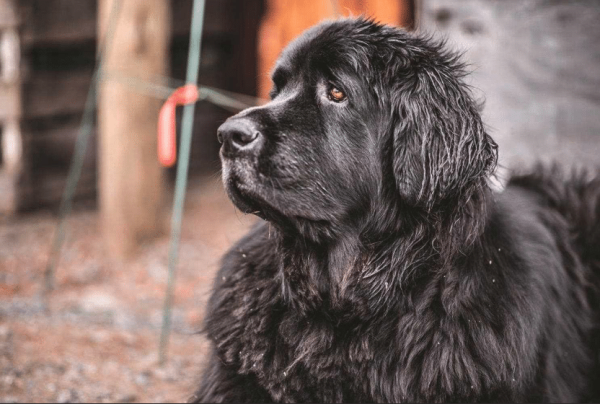The post Newfoundland by Dogster HQ appeared first on Dogster. Copying over entire articles infringes on copyright laws. You may not be aware of it, but all of these articles were assigned, contracted and paid for, so they aren't considered public domain. However, we appreciate that you like the article and would love it if you continued sharing just the first paragraph of an article, then linking out to the rest of the piece on Dogster.com.

Photography ©Getty Images
Newfoundland
Quick Facts
- Weight: 100 – 180 pounds (45.36 – 81.65 kg)
- Height: 25 – 29 inches (63.50 – 73.66 cm)
The Look of a Newfoundland
Newfoundlands are large, big-boned dogs covered in coarse, heavy coats. They have big, broad heads with smooth faces, firm cheeks, well-developed muzzles and medium-sized ears that hang close. Their somewhat small, dark brown eyes are deeply set, and their strong necks slope down to full chests and broad backs with tails that usually hang down or curve slightly. Their thick, longish coats usually come in black, but can also be found in brown, gray and black & white. Overall, Newfoundlands carry their massive frames with dignity and strength.
Thumbnail: Photography by Kayla Bertagnolli, as captured at the 2018 Westminster Kennel Club Dog Show.
Traits
- Brave
- Strong
- Mellow
- Loyal
- Affectionate
- Big
Ideal Human Companion
- Families
- Hikers and joggers
- Fishermen
- Hunters
What They Are Like to Live With
Newfoundlands are true gentle giants. They combine the brawn of a Great Pyrenees with the sweet and laid-back personality of a Labrador. Patient, loving and fun, Newfoundlands blend perfectly with the household. They get along famously with the most vivacious and active children, and they are very polite around new people.
Newfoundlands have a reputation for saving lives. While they may not be the most intense guard dogs, they have been known for rescuing loved ones from fires, drowning and other dangers. They are very good at keeping people out of harm’s way.
Bred to work long days in the intense wet and cold, Newfoundlands make dependable outdoorsy companions. Whether on long hikes in the woods or long days in the field, these dogs have the work ethic and durability to handle extreme weather and dirty jobs. They also love a good, long swim—no matter what the conditions are.
Things You Should Know
These are big, big dogs. If you live in small quarters or have issues sharing space, consider another canine. If you do have a big house and yard, you’ll still want to make space arrangements to accommodate a burly Newfoundland.
Newfoundlands need regular grooming. A daily brushing outside will keep their coats looking great, but be warned that they shed several times a year. And, boy, do they shed. Also, keep some towels around for copious amounts of drool.
A healthy Newfoundland can live as long as 15 years, though the average age is around 10. Common health issues include hip dysplasia and heart disease. They are also prone to bloat. The best way to remedy this is to feed them small meals.
Newfoundland History
Newfoundands originated in the fishing villages of Newfoundland, Canada. For generations, they assisted fishermen by hauling nets, rescuing shipwrecked sailors and providing companionship during long days at sea. Eventually making their way to Europe and the U.S., they became popular working dogs, show dogs and pets. Back in Newfoundland, however, you can still find them working hard with the fishermen.
Read more about the Newfoundland on Dogster.com:
The post Newfoundland by Dogster HQ appeared first on Dogster. Copying over entire articles infringes on copyright laws. You may not be aware of it, but all of these articles were assigned, contracted and paid for, so they aren't considered public domain. However, we appreciate that you like the article and would love it if you continued sharing just the first paragraph of an article, then linking out to the rest of the piece on Dogster.com.
Poop4U Blog
via www.Poop4U.com
Dogster HQ, Khareem Sudlow


No comments: